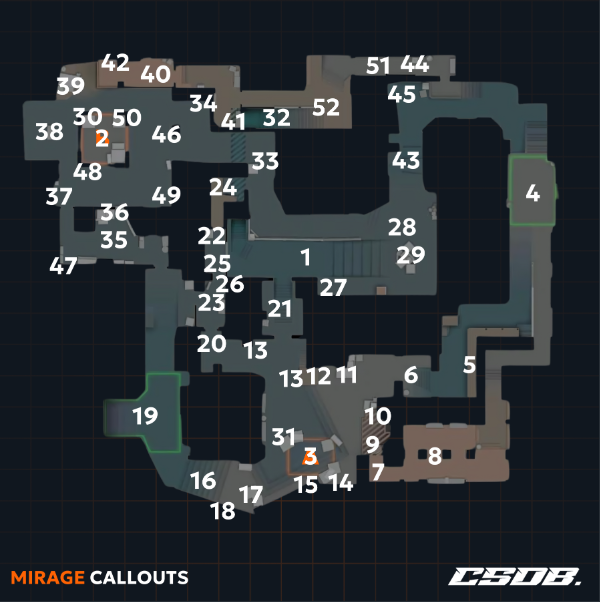Mirage Callouts
Mirage is a hugely popular bomb defusal map in Counter-Strike: Global Offensive set in a Middle Eastern town and is a favourite with many top players. Despite being one of the oldest maps in CSGO, it is still a staple in competitive play.


This map and the callouts are the same (or very similar) in both CS2 and CS:GO.


-
1Mid: The expansive mid area acts as the central hub of the map. This area provides a clear line of sight for Sniper's Nest and Top Mid, where Terrorists often make their entrance.
-
2B Site: Refers to the specific location on B where the bomb can be planted.
-
3A Site: This is the designated area on the A Bombsite where the terrorists can plant the bomb, different from other sections of the site.
-
4T Spawn: The starting point for the Terrorist team at the beginning of each round.
-
5T Roof: A raised ledge outside A Ramp, often used by Terrorists for strategic positioning and grenade throws.
-
6A Ramp: The primary entrance from T Spawn to the A Site, which is easily recognizable by its arched entrance.
-
7Palace: A building that provides access to A from T Spawn, which is usually used for flanking maneuvers.
-
8Pillars: Structures within the Palace that offer cover and concealment for players.
-
9Balcony: The wooden platform that extends from the Palace, providing an elevated view of the A Site.
-
10Shadows: The dark area beneath the Balcony that is often used by players to hide.
-
11Tetris: A stack of boxes near A Ramp that is commonly used for cover by attackers.
-
12Sandwich: An alcove between Stairs and Tetris near the A Bombsite.
-
13Stairs: The set of stairs near the Connector and Jungle that offers a vantage point for defenders.
-
14Firebox: A small cubby on the A Site that players can use to hide.
-
15Ninja: This is the alcove between stacks of boxes on the A Bombsite, which is often overlooked by attackers
-
16CT: This refers to the area near Ticket Booth and Trash that is frequently used by defenders to monitor the A Site.
-
17Ticket Booth: A tall column near CT Spawn that provides visibility over smoke grenades and is common for AWPers.
-
18Trash: A trash can near the Ticket Booth, often used for cover by defenders.
-
19CT Spawn: The starting point for the CT Side at the beginning of each round
-
20Jungle: An area that provides visibility of A from a distance.
-
21Connector: The tunnel that connects the Mid area to the A Site, offering multiple routes for attackers.
-
22Vent: A small hole that connects the CT Spawn with the Mid Window, often cleared at the start of rounds.
-
23Sniper's Nest: A window that offers players a clear view of Mid that's favored by counter-terrorists for sniping.
-
24Ladder Room: A room that connects B Short with Sniper's Nest and Jungle that is accessible via a ladder.
-
25Underpass: An underground passage that connects B Apartments to the bottom of Mid.
-
26Boost: Ledges in Mid that are used by players to boost into Sniper's Nest.
-
27Chair: A small chair in Mid that provides cover and helps conceal players.
-
28Top Mid: The area of Mid that is farthest from Sniper's Nest.
-
29Mid Boxes: A set of boxes and a cart at the top of Mid that's commonly used for cover by attackers.
-
30Default: Boxes around the default plant area on the A Bombsite.
-
31Triple Box: A set of three boxes at the back of the A Bombsite.
-
32Catwalk: A walkway in Mid that leads up to B Short.
-
33B Short: The entrance to the B Site from Mid.
-
34Short Corner: The corner adjacent to B Short when approaching from Mid.
-
35Market: A shop near the B Site that connects T Spawn to the bomb site.
-
36Window: The window in Market that overlooks the B Site.
-
37Door: The doorway into the Market near the B Site.
-
38Bench: A bench at the back of the B Bombsite.
-
39Van: The white truck that is positioned opposite B Apartments, which can be jumped onto to gain access to B Apps or to gain vision into them. Also sometimes called "Car."
-
40B Apartments: The long and narrow passage that leads from T Spawn to the B Bombsite. This serves as the primary route that Terrorists often use to assault the B Site.
-
41Kitchen: The area adjacent to B Apartments that can be wall-banged through a wooden window.
-
42B Plat: The elevated platform that overlooks the B Site.
-
43Side Alley: The passage that connects Mid to T Spawn.
-
44TV: The television that is located in House/B Apartments.
-
45Cart: Boxes near the Apartments/House ramp that used to look like a cart.
-
46Arches: The arched structure that connects B Short to B Site.
-
47Sneaky: A position on top of the fridge in Market, which offers stealthy gameplay.
-
48Empty: The pillar nearest to the Market Door.
-
49E Box: A corner of B Site close to Market Window.
-
50Boost Boxes: Boxes near the default plant position on B Site used for boosting players.
-
51House: The building that links Back Alley/T Apartments to T Spawn/Side Alley.
-
52Back Alley: The area between Apartments and House/TV.